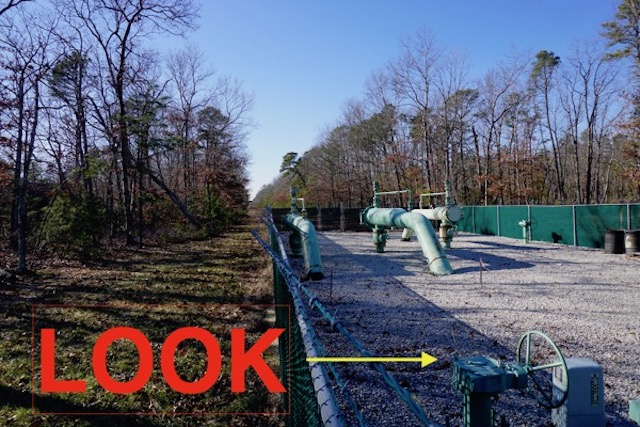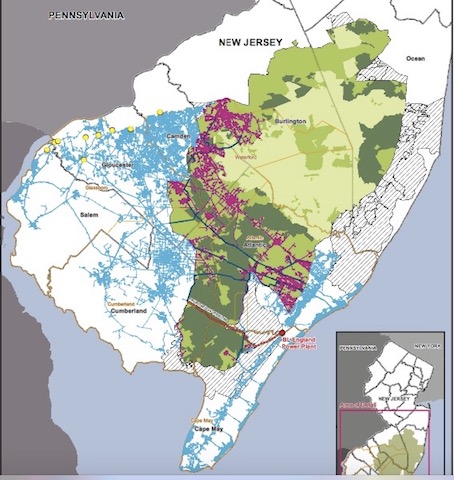Fossil infrastructure is highly vulnerable to direct actions
I can get up there and tell you that there are places in the Pinelands where we have many, many, many, many, many, many, miles of natural gas pipeline that has been put in – and we can go out and look at what the effects were of those. ~~~ Executive Director Nancy Wittenberg advising the Pinelands Commission, back in July 2013 (listen to recording @ time 11:26)
…
And that — that brings me to the second mode of civil disobedience. There’s a time when the operation of the machine becomes so odious, makes you so sick at heart that you can’t take part! You can’t even passively take part! And you’ve got to put your bodies upon the gears and upon the wheels, upon the levers, upon all the apparatus — and you’ve got to make it stop! And you’ve got to indicate to the people who run it, to the people who own it — that unless you’re free the machine will be prevented from working at all!! ~~~ Mario Savio (watch on YouTube – read his full statement)
In the wake of Superstorm Sandy, the public learned what had long been kept secret and ignored by industry and government officials: damage assessments found that the electric utility infrastructure was highly vulnerable to flooding, sea level rise, and storm surge. Dozens of electrical substations were located in flood prone areas and knocked out. As a result of this failure to address known vulnerabilities, hundreds of thousands of people lost power for almost a week, or more.
[Update: 2/14/17 – here’s another warning on infrastructure vulnerability that was ignored:
Oroville Dam: Feds and state officials ignored… ~~~ end update]
Similarly, in the wake of direct action by brave climate activists, another huge energy infrastructure vulnerability has become apparent: (read the whole story):
Climate Activist Escapes Conviction in Action That Shut Down 5 Pipelines
Climate activist Ken Ward eluded conviction on multiple criminal charges for shutting off an emergency valve for Kinder Morgan’s Trans Mountain oil sands pipeline last October after a county court in Washington declared a mistrial.
Following three days of trial in Washington’s Skagit County Superior Court, the jury deliberated Ward’s fate for about five hours before failing to unanimously agree to convict him of sabotage, burglary and two counts of felony. Skagit County deputy prosecutor Sloan Johnson is expected to announce his decision about whether to retry Ward in the coming weeks.
Ward’s trial, which began on Monday, was the first for the five activists that were charged for helping to shut off emergency valves of five oil sands pipelines across four states on Oct. 11. Ward and his colleagues, who call themselves “ValveTurners,” filmed their coordinated acts of civil disobedience, which resulted in the temporary shutdown of segments of five pipelines: the Trans Mountain, Enbridge’s Line 4 and 67, TransCanada’s Keystone and Spectra Energy’s Express Pipeline.
The remote locations and huge number of these pipeline infrastructures and the ease of shutting them down makes them highly vulnerable.
South Jersey Gas Co. has a very different view on vulnerability:
To understand why the [Pinelands pipeline] Project is necessary to address a major vulnerability in SJG’s existing distribution system, it is essential to understand how the Company’s distribution system is configured. Attached as Exhibit 18 is a map depicting the Company’s existing transmission and distribution system in relation to the Pinelands.
EXHIBIT 18
The direct action tactic is not limited to west coast activism.
Direct action? Doesn’t that mean people chaining themselves to trees and so on?Well, maybe. “People I have talked to are very willing to get involved in a direct-action campaign of putting themselves in the way of the construction crews,” he said. “I think it’s time to think about taking different tactics if the ones we’re using aren’t working.” ~~~ NJ Spotlight 2/8/17
We’ll leave it at that.



Pingback: WolfeNotes.com » Pinelands Commission Approves Pipeline, Despite Massive Protests
Pingback: WolfeNotes.com » Hayduke Lives!